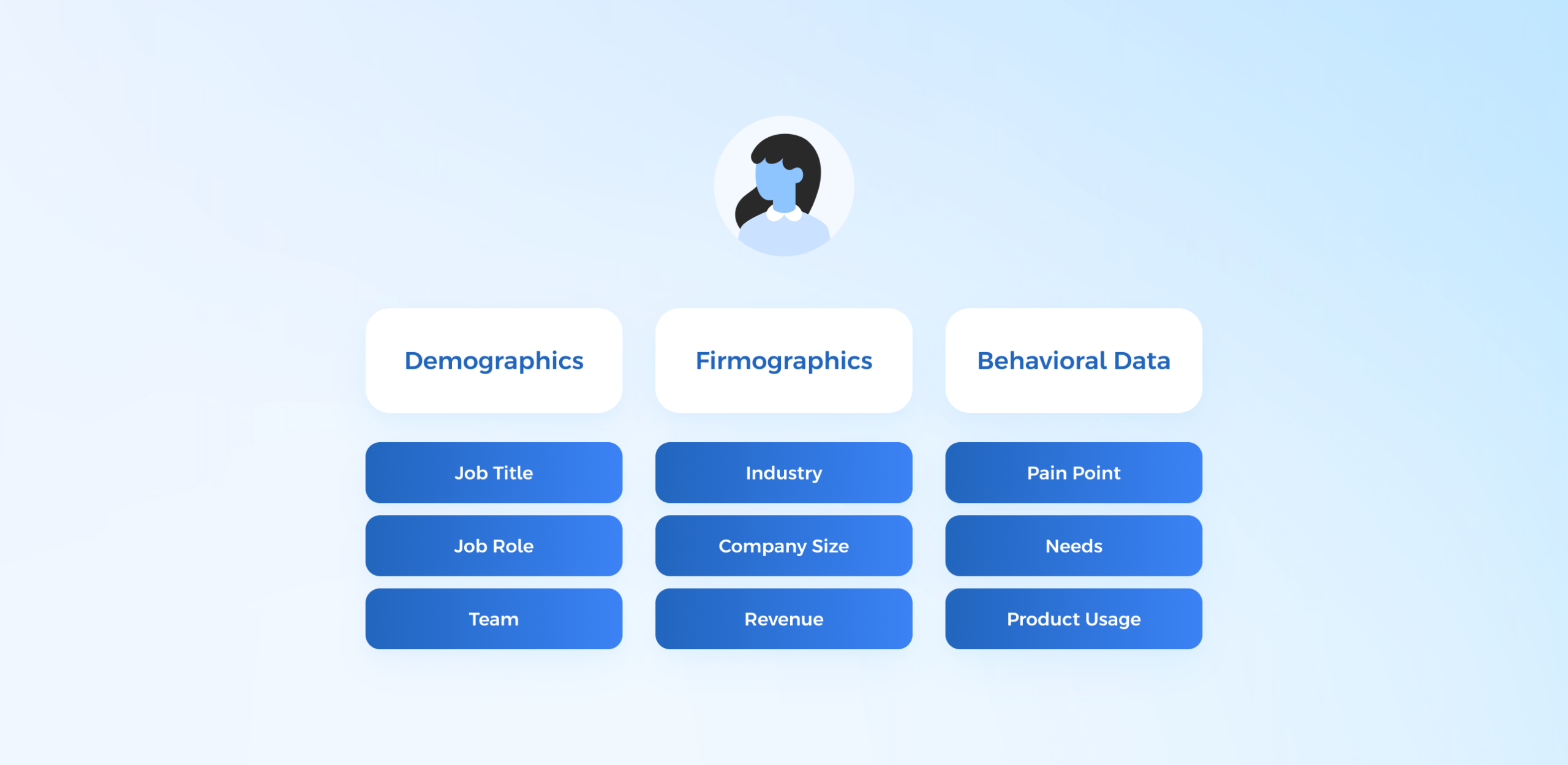User persona, buyer persona, influencer, decision-maker… There are many characters that take a role in buying processes, especially in enterprise companies. We’ve talked about buyer persona earlier. Now, it is time to talk about the real user and how you can define it in a simple template.
What is User Persona?
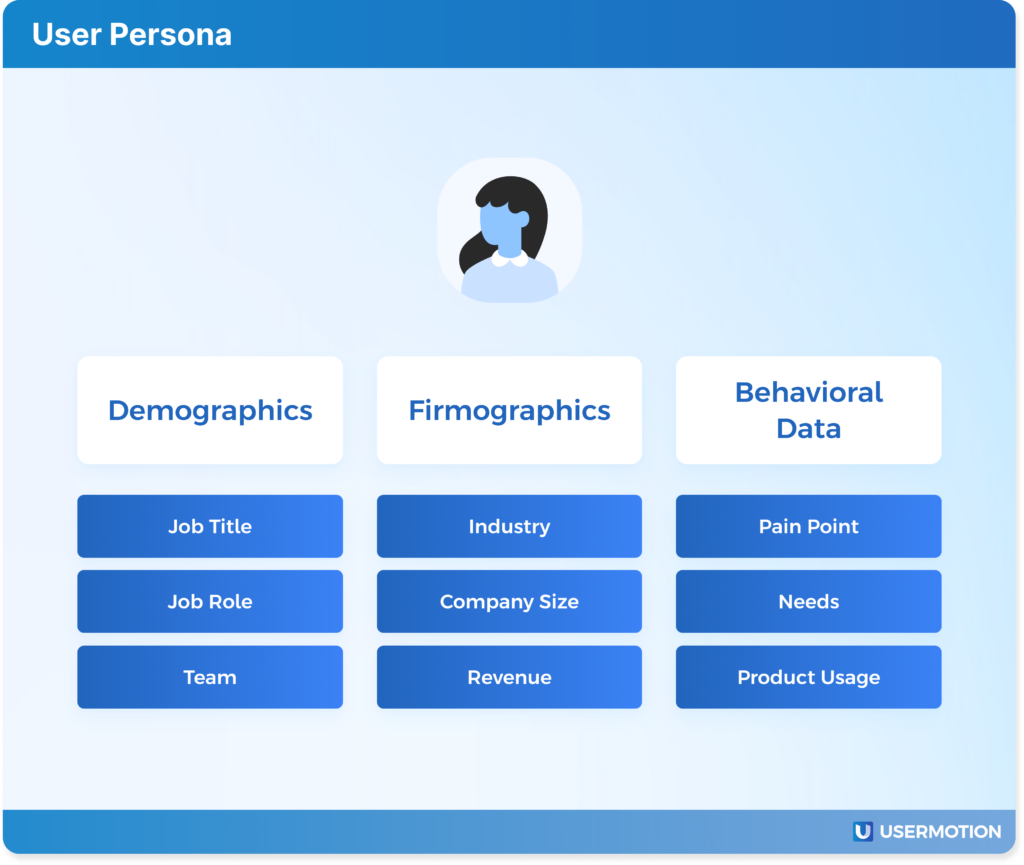
A user persona represents a semi-fictional character that embodies the typical user of your software. Unlike buyer personas, which focus on who buys the product, user personas examine who uses the product.
These users can be defined based on market research and real data about your existing users.
User personas capture key characteristics such as their job roles, goals, challenges and how they interact with your software. You can create your user persona criteria by using generators and tools.
This understanding helps align product development, marketing strategies and customer support to more effectively meet users’ needs, resulting in a better user experience and higher satisfaction.
Why User Personas Important?
Because as much as the buyer characters, user persona has a great influence in buying decision. Think of this: you have a new account, that fit in your ideal customer profile and showing buying intent. Some of these intentions are performed by user personas.
In account scoring models, by analyzing the behaviors of users such as product usage, feature adoption, feedback, and engagement with customer support or educational content, companies can score the whole account based on their collaborative level of engagement.
Can User Persona be the Same with Buyer Persona?

In SaaS sales, especially in a B2B context, user personas and buyer personas are often different. The buyer persona can be a decision maker, such as the CTO or department manager, who approves the purchase based on budget and strategic considerations. The user person, meanwhile, is the individual or team that interacts directly with the software on a daily basis to fulfill their tasks.
However, in smaller companies, these personas can overlap when the buyer is also the primary user of the software.
This overlap means that the person evaluating the software is also the person who will use it on a daily basis, as the decision-making process is more smooth and there are fewer layers of hierarchy.
For example, in a small startup, the CEO might be searching for a project management tool. In this case, the CEO is both the buyer (making the purchase decision) and the user (actively using the software to manage projects).
This dual role means that when creating marketing materials, sales pitches, or product development strategies, emphasizing features, usability, and direct benefits to daily tasks can appeal simultaneously to both their buyer and user considerations.
How to Create a User Persona?
1. Evaluate Your Market
If you have a product-market fit, or are still evaluating how you fit best, then you are more or less aware of what and whose problems your product solves.
Knowing your position, the first step becomes pretty easy. All you should do is identify your ideal customer profile and, no matter the business or consumer level, work on learning more about the personas, contact information, behaviors and intent.
Researching on LinkedIn, Communities, and through surveys are powerful ways to understand your ideal customer personas in depth.
On LinkedIn, you can:
- Use search feature and Sales Navigator to identify potential user personas.
- Join relevant groups where your user personas might be active. Engage in discussions, share insights, and observe the challenges and needs.
- Look at the profiles of competitors or key figures within your industry. Their connections and interactions can offer insights into potential markets or customer segments.
Communities are also great resources for you.
- Being active on platforms such as Reddit, industry-specific forums and Facebook groups are rich resources for discovering user personalities.
- By contributing insights and assistance in these communities, you can observe first-hand the challenges and needs of potential users.
- Within these communities, identify people who are champions or community leaders. They can provide additional insights.
By running surveys, you can successfully complete your first stage market research.
- Create surveys designed to learn more about your potential users’ demographics, job roles, challenges and needs.
- Use email lists, social media and community platforms to distribute your surveys.
- After responses come in, look for patterns and segments within the data. This can help you identify different user personas based on real data from potential customers.
2. Survey Existing Customers
Having existing customers is a big advantage because it means you already have real data and insights. By using the right survey and analytics tools and asking proper questions, you can learn more about your users, helping you develop high fit user persona frameworks.
To conduct surveys and analyze users, you can use:
- Hotjar
- Typeform
- SurveyMonkey
- Google Forms
And to build user persona, you can use four questions (this does not include demographic questions):
- Can you describe a recent challenge you faced and how our product helped solve it?
- What are your main goals when using our product?
- How does our product make you feel in terms of achieving your objectives?
- What features of our product do you use the most?
3. Define Your User Persona’ Traits
Defining user persona characteristics is very important because it provides a static framework that makes it easier to identify and understand potential users.
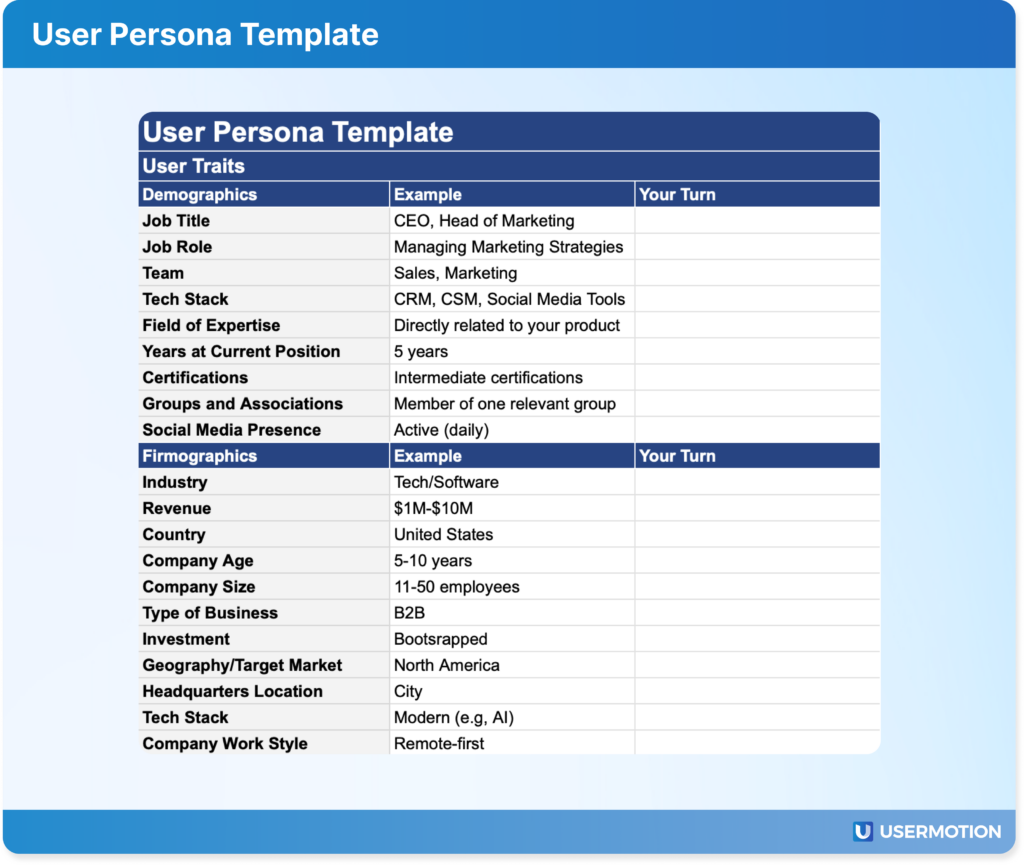
Go duplicate the simple user persona template to start defining your traits and criteria!
To identify them, you can use the above template, with the following traits (you can remove some or add more based on your needs):
- Job title
- Job role
- Team they work on
- Tech stack
- Field of expertise
- Years at current position & certifications
- Groups & associations
- Social media presence
- Industry
- Revenue
- Country
- Company age & size
- Type of business
- Investment
- Geography/Target Market
Identifying user personas characteristics helps in:
- Focusing on product development to solve real problems of real users.
- Adapting marketing messages to appeal directly to the interests and motivations of key segments.
- Prioritizing product and feature development based on the needs of the most important user groups.
- Improving the user experience by understanding and predicting user behavior.
- Establishing a common language and understanding of customer segments within the team or company.
4. Identify Behavioral Intent
Identifying behavioral intent is a tricky process, but it’s what really differentiates identfiyng a user persona.
Unlike buyer personas who are not actively engaged with your product, user personas are those who have completed onboarding, installed integrations and are regular users of your app.
Once you have demographically and firmographically characterized your personas, you can dig deeper into their in-app behavior to gather actionable insights.
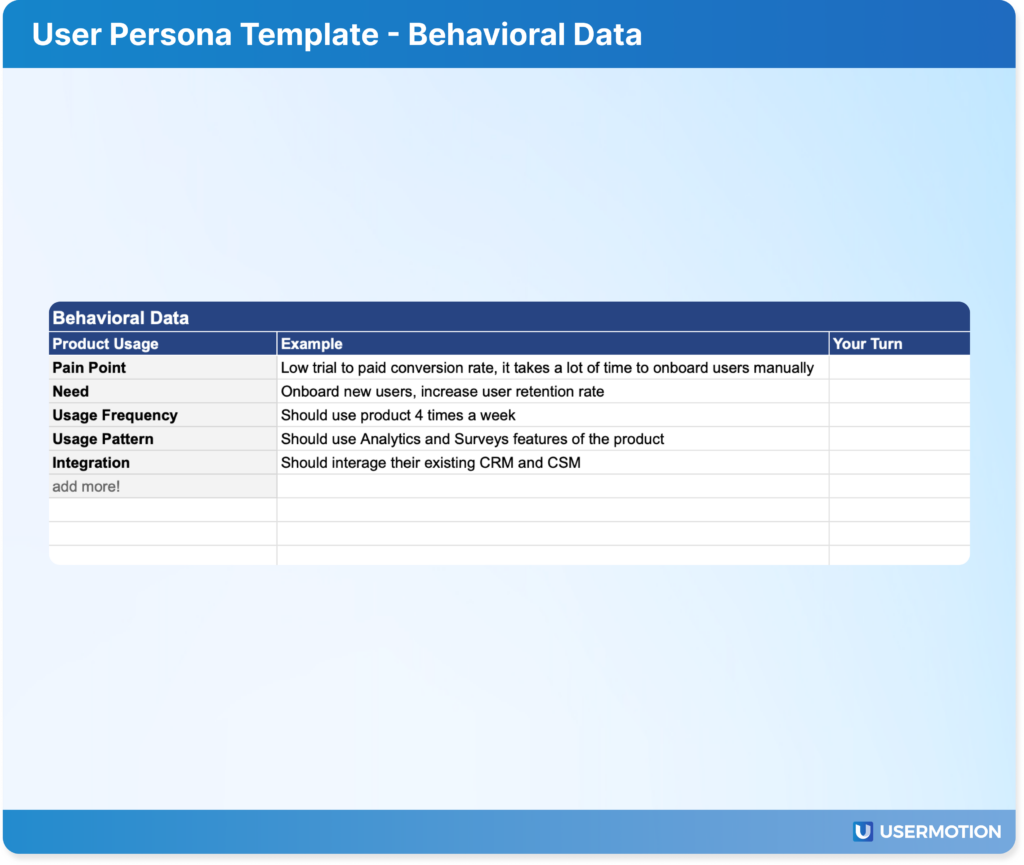
Go duplicate the simple user persona template to start defining your behavioral criteria!
To correctly identify and analyze behavioral intent, consider the following:
- Product usage
- Pain points
- Needs
- Usage frequency
- Usage pattern
- Integration
- and more!
How to Identify Behavioral Data?
Lead scoring services like UserMotion helps in identifying and analyzing behavioral data to enhance your understanding of user intent.
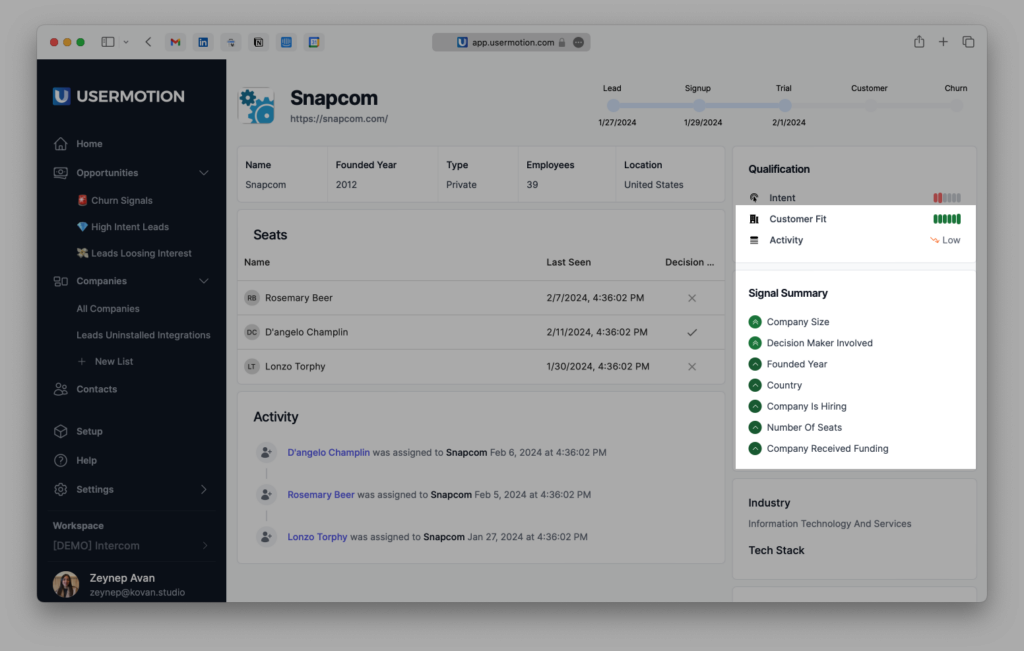
UserMotion’s lead scoring capabilities allow you to quantify user actions and engagements. By assigning values to different user behaviors, you can prioritize users based on their activity levels and engagement with the product.
Behavioral Tracking
With UserMotion, you can track a user’s interactions within the app, from feature usage to time spent on specific tasks.
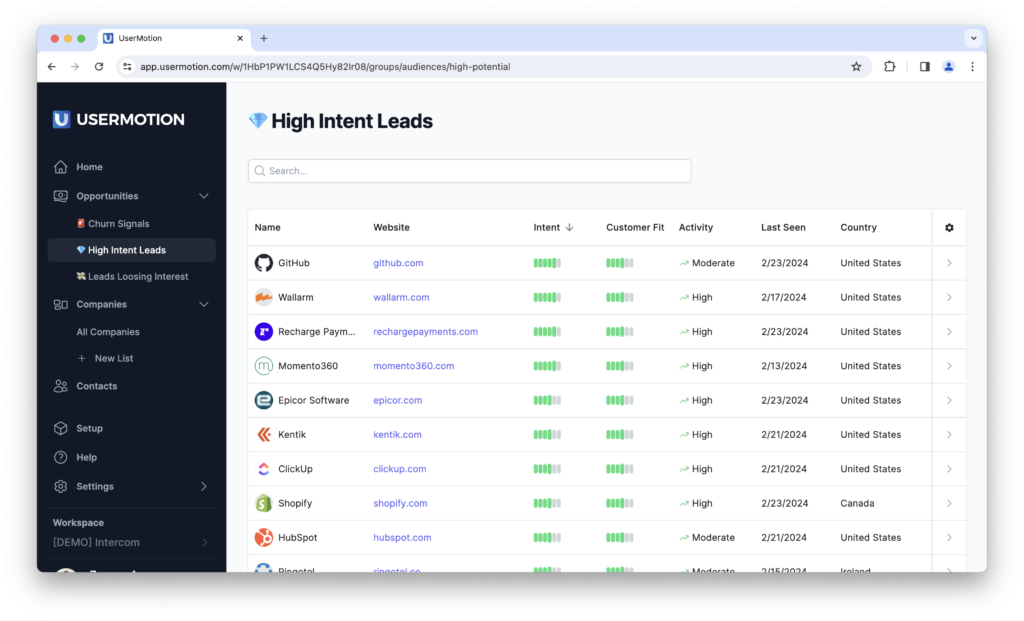
Audiences and Segmentation
UserMotion can automatically segment users based on behavior, creating audiences of users with similar usage patterns.
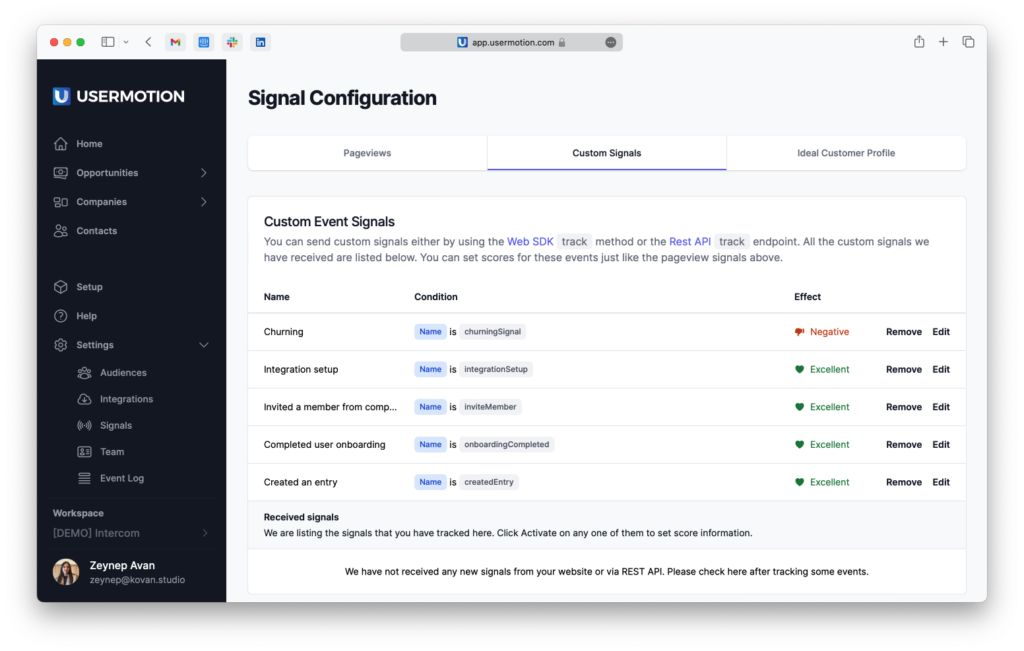
Custom Event Signals
The platform allows you to monitor custom events that are critical to your product, such as completing a key task or reaching a usage milestone. Understanding these events can give insights into user goals and pain points.
5. Refine It In Time
Perfecting your user persona is not a one-time event but a continuous process. As your product evolves and the market changes, so too should your understanding of your users. Here’s how to refine your user persona over time:
- Regularly gather and analyze feedback from your users through surveys, interviews, and usability tests. This helps keep your personas up to date with the changing needs and behaviors of your users.
- Use tools like UserMotion to keep an eye on how user interactions with your product change over time. Track new features’ adoption rates, changes in usage patterns, and the emergence of new pain points.
- As you gather more data, revisit and refine your lead scoring models. What was a high-priority action six months ago may be less so now, or vice versa.
- Set a schedule to review and update your personas. This could be quarterly, bi-annually, or annually, depending on the pace at which your industry or product changes.
- Base updates to your personas on quantitative data from analytics and qualitative data from user research.
- Encourage collaboration between departments such as sales, customer service, and product development to provide a 360-degree view of the customer.
By continuously refining your user persona, you maintain a deep and relevant understanding of your users. This, in turn, ensures that your product and marketing efforts remain closely aligned with your efforts.

